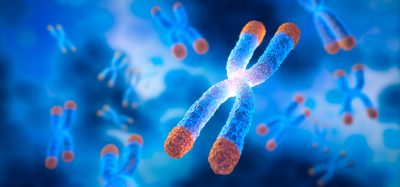New research holds significance in regulating T cell function
Posted: 8 September 2023 | Taylor Mixides (Drug Target Review) | No comments yet
New research shows T cells use the nuclear receptor RARα not just for gene regulation, but also to trigger cell surface events that activate them against pathogens and cancer.


New researched published in the journal Immunity, T cells exhibit an unusual, yet vital behaviour in their battle against pathogens and cancer cells, involving a nuclear receptor. This receptor, referred to as retinoic acid receptor alpha (RARα), is recognised for its regulation of gene expression within the nucleus. However, recent insights indicate that it also operates beyond the nucleus, orchestrating initial events at the cell surface that trigger the activation of T cells.
The conventional expectations of nuclear receptors, like RARα, are challenged by these novel discoveries. Remarkably, these findings propose that the presence of a cytoplasmic version of RARα is indispensable for T cells to initiate their defence against diseases.
“Cytoplasmic retinoic acid receptors turn out to be central for a T cell to link sensing at the cell surface with downstream signalling cascades and gene expression programs that transform the T cell to become an active fighter,” says Professor Hilde Cheroutre, who led the new study at La Jolla Institute for Immunology (LJI) with LJI Assistant Professor Samuel Myers, LJI Professor Mitchell Kronenberg and LJI Professor Emeritus Amnon Altman.
The study’s outcomes are also the fruit of a fruitful collaboration involving scientists from the RIKEN Center for Integrative Medical Sciences in Japan, alongside local research teams from UC San Diego and the Salk Institute.
Enabling T cells to respond to threats
To grasp the significance of this discovery, it’s useful to envision the internal layout of a T cell. The cell’s nucleus, containing compacted DNA, is centrally positioned within the cell. Surrounding this nucleus within the cell’s cytoplasm are various molecules and cellular structures called organelles, enclosed by a membrane at the cell’s periphery (cell membrane).
Specific molecules called T cell receptors (TCRs) are located on the cell membrane. These TCRs act as receptors, receiving signals from other cells. A suitable analogy for TCRs would be that of forest fire spotters stationed at remote cabins, scanning for signs of smoke. Similar to how fire spotters alert authorities about distant smoke, TCRs swiftly transmit signals to the headquarters of the cell—the nucleus—when they sense potential threats like viruses or cancer cells.
The ability to transmit this signal to the cell nucleus is pivotal, as it triggers gene expression changes that convert the T cell into a combat-ready entity. However, TCRs can’t simply place a call; thus, how do they communicate the presence of danger to the distant nucleus?
The process of signalling is truly intriguing. Once a TCR is activated, enzymes known as kinases, responsible for adding phosphates to proteins, collaborate with adaptors that prompt nearby proteins to interact and form a specialized molecular “activation complex.” This complex, termed the TCR signalosome, assembles just beneath the cell membrane. Cheroutre remarks, “The TCR signalosome plays an immensely important role in facilitating communication between a cell’s external and internal environments.”
Although numerous researchers have studied the TCR signalosome extensively over the years, the presence of RARα within this activation complex had remained unnoticed until now.
The role of RARα
The revelation of RARα’s undisclosed function owes its gratitude to the advancement of CRISPR techniques, progress in imaging technologies, and the refinement of mass spectrometry—coupled with years of relentless effort by the team at LJI and their collaborative partners.
Belonging to an extensive family of retinoic acid receptors, RARα traditionally resides on regulatory sections of target genes nestled within the nucleus. Within this domain, retinoic acid receptors recruit molecules with repressive or activating functions, which facilitate the modulation of gene expression—effectively turning genes “on” or “off.” This pivotal duty performed within the nucleus has earned these retinoic acid receptors the epithet of “nuclear receptors.”
Several years ago, Cheroutre and her colleagues released research findings demonstrating that retinoic acid (RA), derived from vitamin A, triggers the activation of nuclear RARα and fosters gene expression that is critical for the differentiation of regulatory T cells with suppressive abilities, ultimately dampening immune responses.
For their recent study, Cheroutre and her team aimed to delve into how retinoic acid exercises control over the destiny of these suppressive T cells. This led her lab to conduct a more thorough examination of retinoic acid receptors, including RARα.
Could these two isoforms serve disparate functions in T cells? Upon closer scrutiny, the researchers made a startling observation: one of these RARα isoforms neither responded to retinoic acid nor possessed the necessary components to function as a nuclear receptor.
“It didn’t have the tools that are important for nuclear receptors, namely the ability to interact with DNA and the ability to translocate from the cytoplasm to the nucleus,” says Cheroutre.
Utilising CRISPR gene editing methodologies to manipulate the expression of the two isoforms, the scientists discerned that manipulating the cytoplasmic isoform yielded significant disruptions in TCR signalling within the cytoplasm. This interference subsequently impaired the cell’s ability to communicate with the command centre situated in the nucleus.
RARα: positioned and timed aptly
With the identification of the location for this RARα isoform, the researchers embarked on deciphering the proteins that interacted with RARα. Their efforts led to the recognition of interactions with ZAP70 kinase, a pivotal constituent of the TCR signalosome.
An additional pivotal hint that hinted at RARα’s role beyond the nucleus emerged from proteomics research spearheaded by the Myers Lab. Employing mass spectrometry techniques, the researchers detected a biochemical process called phosphorylation. This process involves the attachment of a phosphoryl group to proteins by upstream kinases.
“There are hundreds to thousands of dynamic phosphorylation events that occur during the first hour or so of T cell stimulation,” says Myers.
While scrutinising their data, Myers and his team made an unexpected observation—a phosphorylation event associated with RARα. Intriguingly, this phosphorylation of RARα commenced a mere three minutes following the initiation of T cell activation. “Because this event was that early, our findings suggest that this phosphorylation of RARα is near the T cell receptor—and it has a burst in activity right after the TCR is stimulated,” says Myers.
This revelation further bolstered the notion that the cytoplasmic isoform of RARα is triggered by the TCR rather than by retinoic acid (RA), as observed with the nuclear RARα. Consequently, this novel RARα variant emerges as an indispensable element of the TCR/ZAP70 activation complex situated at the cell surface.
Subsequently, Cheroutre and her research collaborators unveiled another intriguing process within the cytoplasm. Prior knowledge indicated that RA, present in the bloodstream and taken up by T cells, is transported to the nucleus through a molecule known as cellular retinoic acid binding protein 2 (CRABP2). This cytoplasmic CRABP2 binds to RA and conveys it into the nucleus, where it activates the nuclear form of RARα.
In their study, the researchers demonstrated that in the absence of CRABP2, RA remains confined to the cytoplasm of the T cell. Instead of activating cytoplasmic RARα, RA interferes with TCR-activated RARα in the cytoplasm, impeding T cell activation. Consequently, the T cell loses its capability to effectively combat infections or eliminate cancer cells. Importantly, this phenomenon’s silver lining is that RA’s interference with cytoplasmic RARα curbs the T cell’s inflammatory response. The researchers speculate that this mechanism could serve as a valuable target for combating autoimmune diseases and other inflammatory conditions.
In terms of future exploration into TCR signalling, the recent study underscores the significance of comprehending not only a receptor’s location but also its unique functions and interactions with other molecules.
The Myers Lab will spearhead the next steps in this research. Myers hopes to figure out exactly what RARα does in the TCR/ZAP70 signalling complex. “Does it modulate the signalling strength or duration? How does that change in signal propagate to gene expression and T cell activity?” he asks. His laboratory plans to use a “systems biochemistry” approach to further study the role of cytoplasmic and nuclear RARα in T cell activation and differentiation.
“The ultimate goal is to see if we can identify a new pathway, or set of pathways, that could be exploited to control autoimmune diseases and inflammation or enhance protective immunity to eradicate tumours or fight infections,” says Myers.
Related conditions
Cancer
Related organisations
La Jolla Institute for Immunology (LJI)








